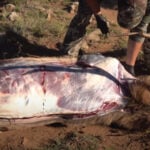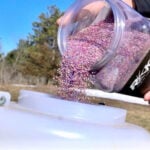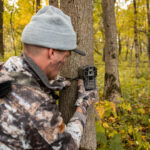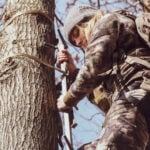When a cold front rolls through in October, you can be assured I will try to be in a treestand. In Mid-October of last year, a large temperature drop compelled me to take a chance and move in on a buck I had encountered two weeks earlier. My plan seemed to be coming together when just after 9 a.m. I turned to see the tall white tines of a nice Pennsylvania mountain buck juxtaposed against the still green foliage. Unfortunately, it quickly became clear that he would skirt my stand just outside of my comfortable shooting distance.
All I could do was watch him pass and hope for a future opportunity. Suddenly, he stopped on a dime and looked over his shoulder right at me. I didn’t even blink. Stone still and covered in camo, I wondered what tipped him off to my concealed location. Then it dawned on me – my pale Pennsylvania-German face was brightly shining against the dark backdrop of the foliage like a Clark Griswold Christmas light display. I have tried to hide my mug in the deer woods ever since.
There are essentially two main options when it comes to camouflaging your face: faint paint or a face mask. Choosing the right option for you can help increase your odds at filling tags this fall. So when it comes to face paint vs. face mask, let’s dig a little deeper and take a closer look at what works best.
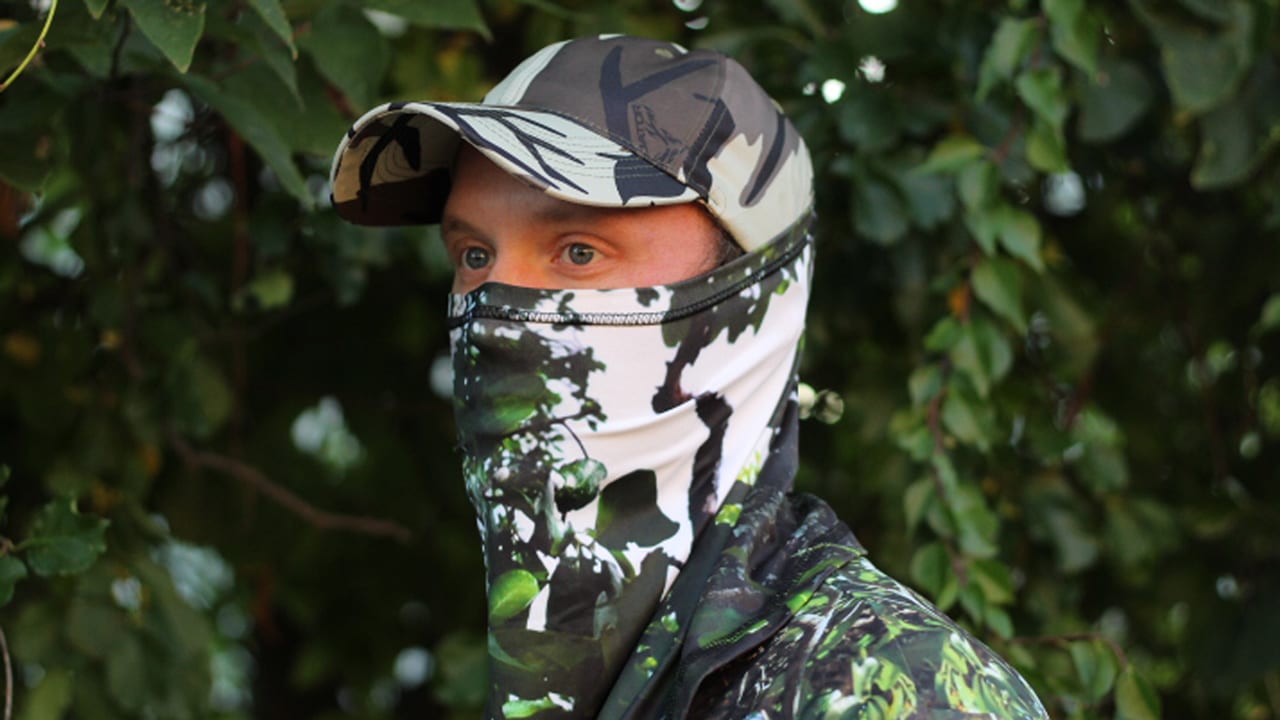
Face mask or face paint…which works best?
Face Paint
Face paint as camouflage is nothing new. In fact, it’s likely that humans have been incorporating it in some form into their camouflage since we began hunting and warring. However, today face paint can sometimes get a bad wrap as some hunters can seem more concerned with how their faces look for Instagram rather than to a deer. Regardless, face paint is practical and effective way to kick your stealth up a notch.
Face paint is extremely versatile, portable, and low maintenance. I have kept a stick of it in my bow case ever since I had the staredown with that October buck. The advantages for paint are simple and practical. It doesn’t need to go through the laundry, I don’t have to worry about soaking up my sweat or reactivating its carbon. My stick of paint simply sits in my bow case and waits to be used.
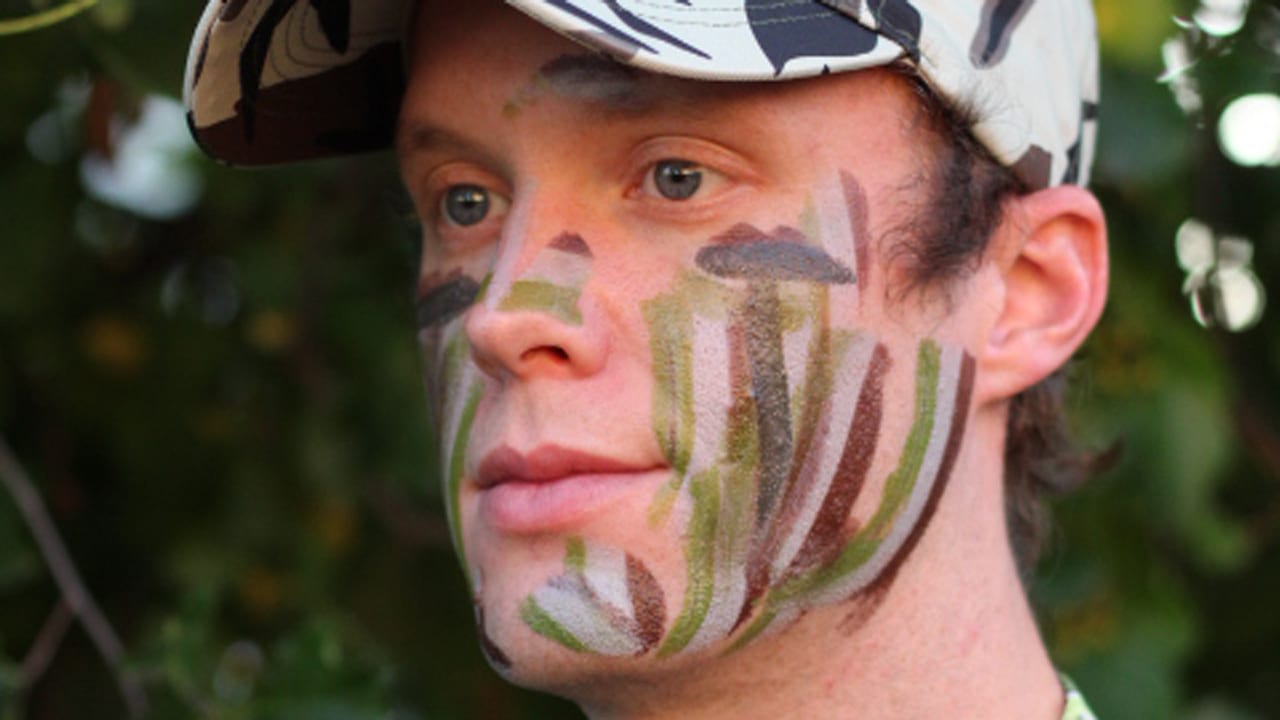
Face pain definitely wins out when it comes to reducing interference in your visibility and shooting.
A few smudges of paint can easily give a hunter the ability to break-up the entirety of their face, even around the eyes. Also, with lots of options from sticks to small tubes of paint, ease or preference of paint application is generally not a negative when it comes to face paint. It can even be easily color or pattern matched to the background of the hunt.
One the flipside, there are some real drawbacks to consider when deciding between paint and a mask. Admittedly, paint can be a bit messy, uncomfortable, and inconsistent. Some paints can be a pain to remove, while others can wear off prematurely in the field. Also, scent conscious hunters feel that paint is just another added odor that you are voluntarily trekking with them into the field.
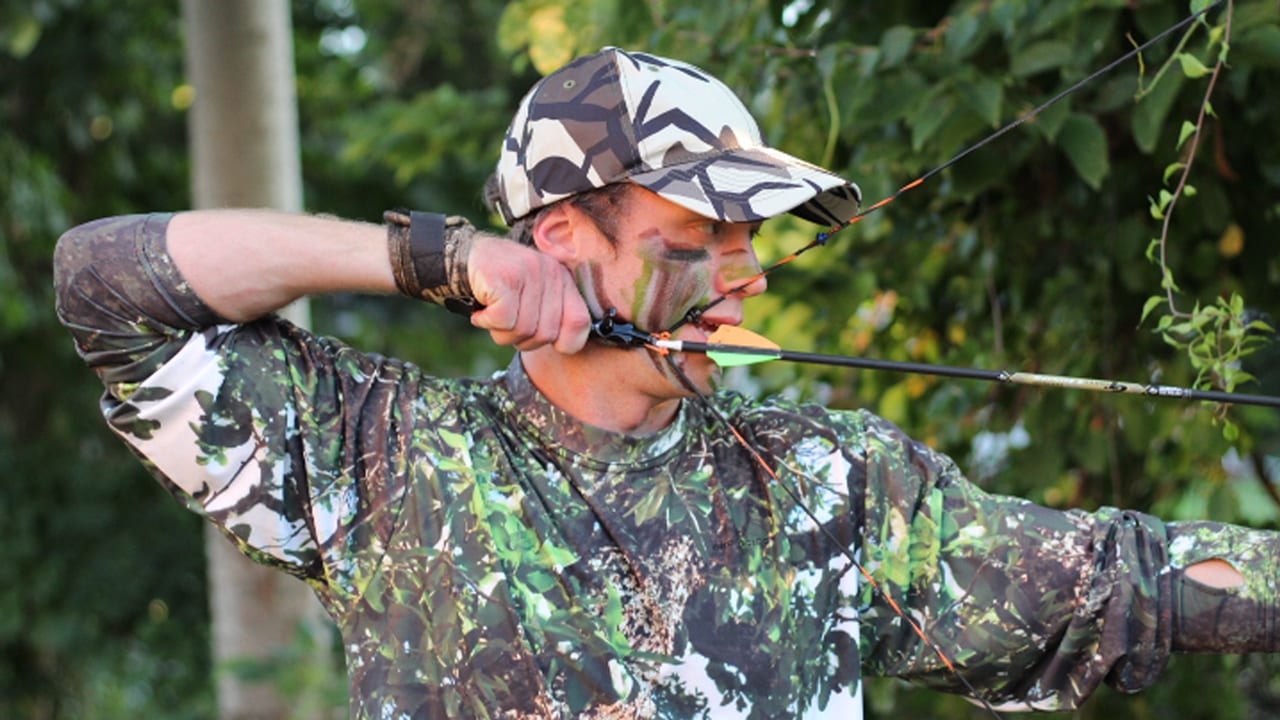
Do you wear face paint for concealment, or simply because you think it looks cool?
Face Masks
A face mask avoids some of the problems of mess and discomfort when it comes to facial camouflage, while also providing other perks. Obviously, the camouflage on a facemask will not fade like some face paints and it is easy to remove. Additionally, the small size of a facemask can make it a non-issue when it comes to adding weight or bulk to your pack or setup.
Facemasks made from carbon materials can actually help reduce your scent profile, allowing you a better shot to go undetected far beyond the visual range of a deer. Some facemasks are built for the heat with moisture wicking properties to keep you cool and comfortable. Conversely, face masks built with more robust insulation can help retain heat when the temperature drops.
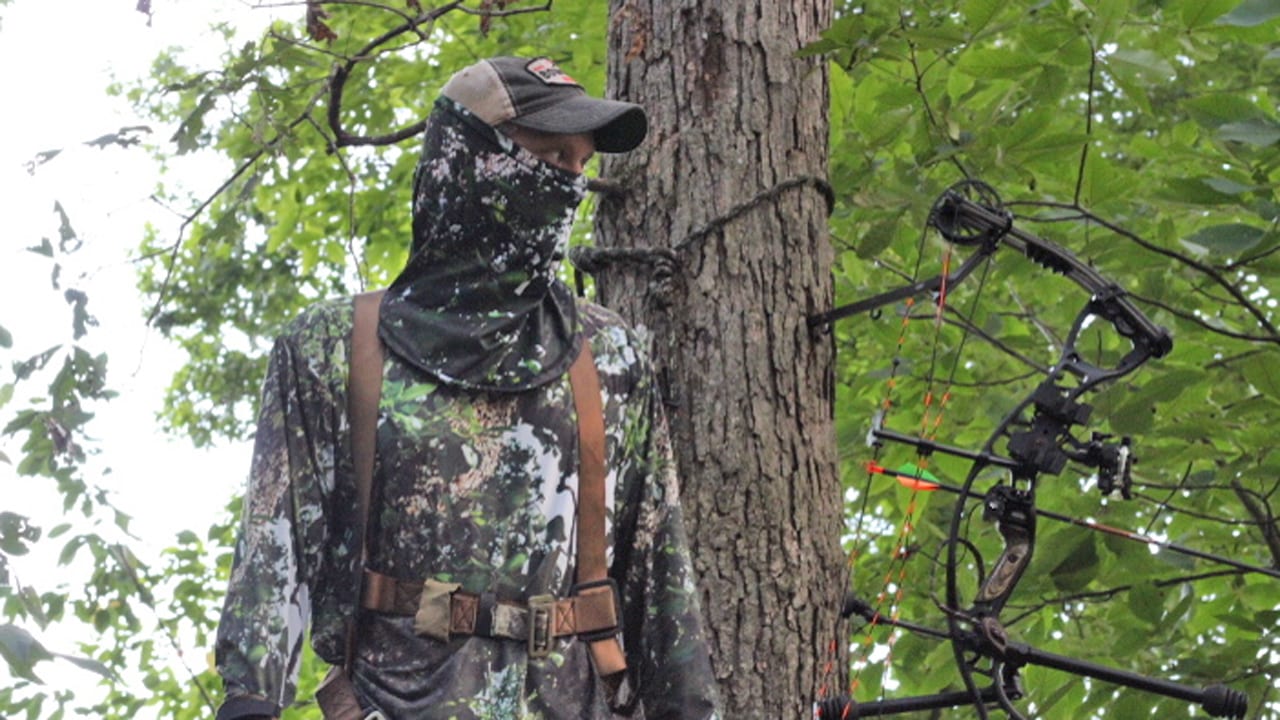
Face masks are nice for clean and quick camo without the mess.
Most of us have used a facemask while spring turkey hunting, so it should come as no surprise that they also help keep pesky mosquitoes and other bugs from peppering out faces with welts during those summer-like early season hunts. Additionally, the full coverage of a facemask allows for hunters to cover their ears and neck with little effort.
Unfortunately, the total coverage of a facemask come with a few drawbacks. Anchor points for your bow can change or be difficult to consistently locate when wearing a facemask, so make sure you send a few shots downrange with one on before heading to the woods with your face mask. Also, depending on the style, the material could sometimes limit hearing or peripheral vision, or interfere with glasses. For some hunters that alone is a deal breaker.
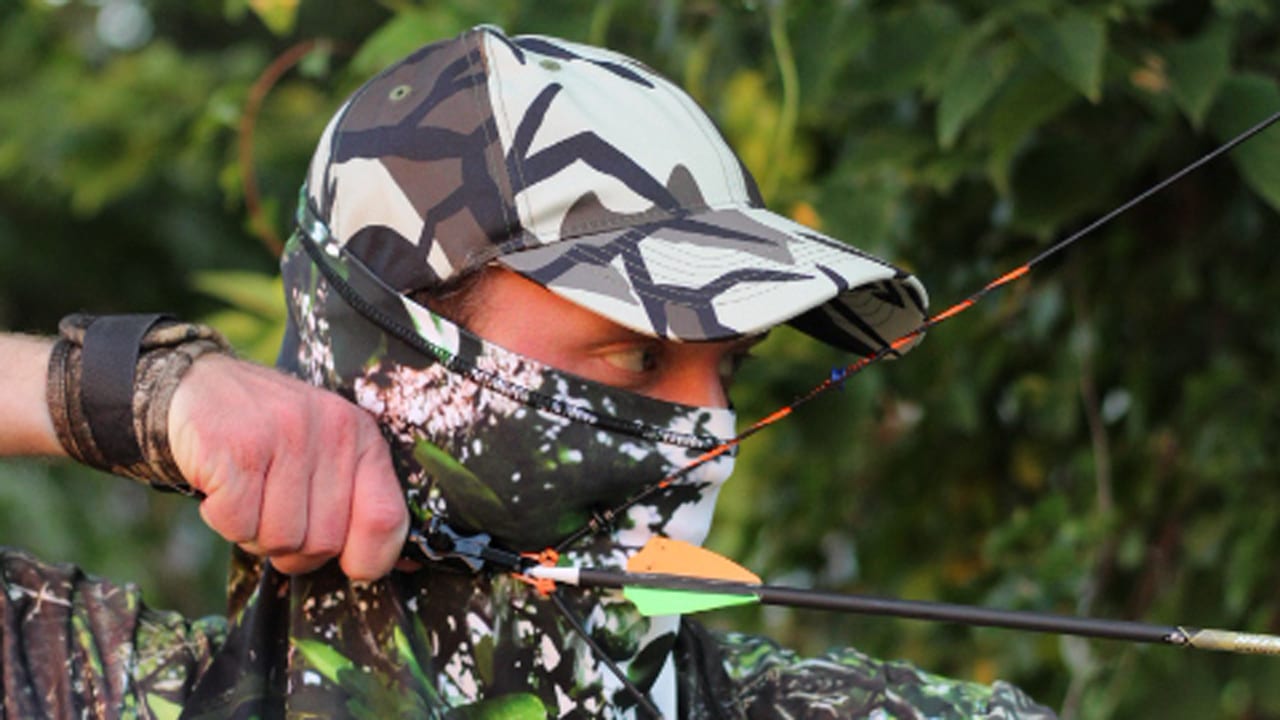
A mask offers quick concealment, but does it interfere with your shot?
You Decide
In reality, many hunters are successful without making any effort to camouflage their faces. That being said, choosing a facial concealment system that works for you- whether paint or mask- is a great exercise in the importance of detail in the whitetail woods. Going the extra mile on camouflage will save you on a few hunts. Applying that same mentality to the rest of your hunting regimen will multiply your success.

 By
By 